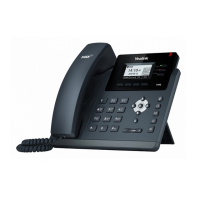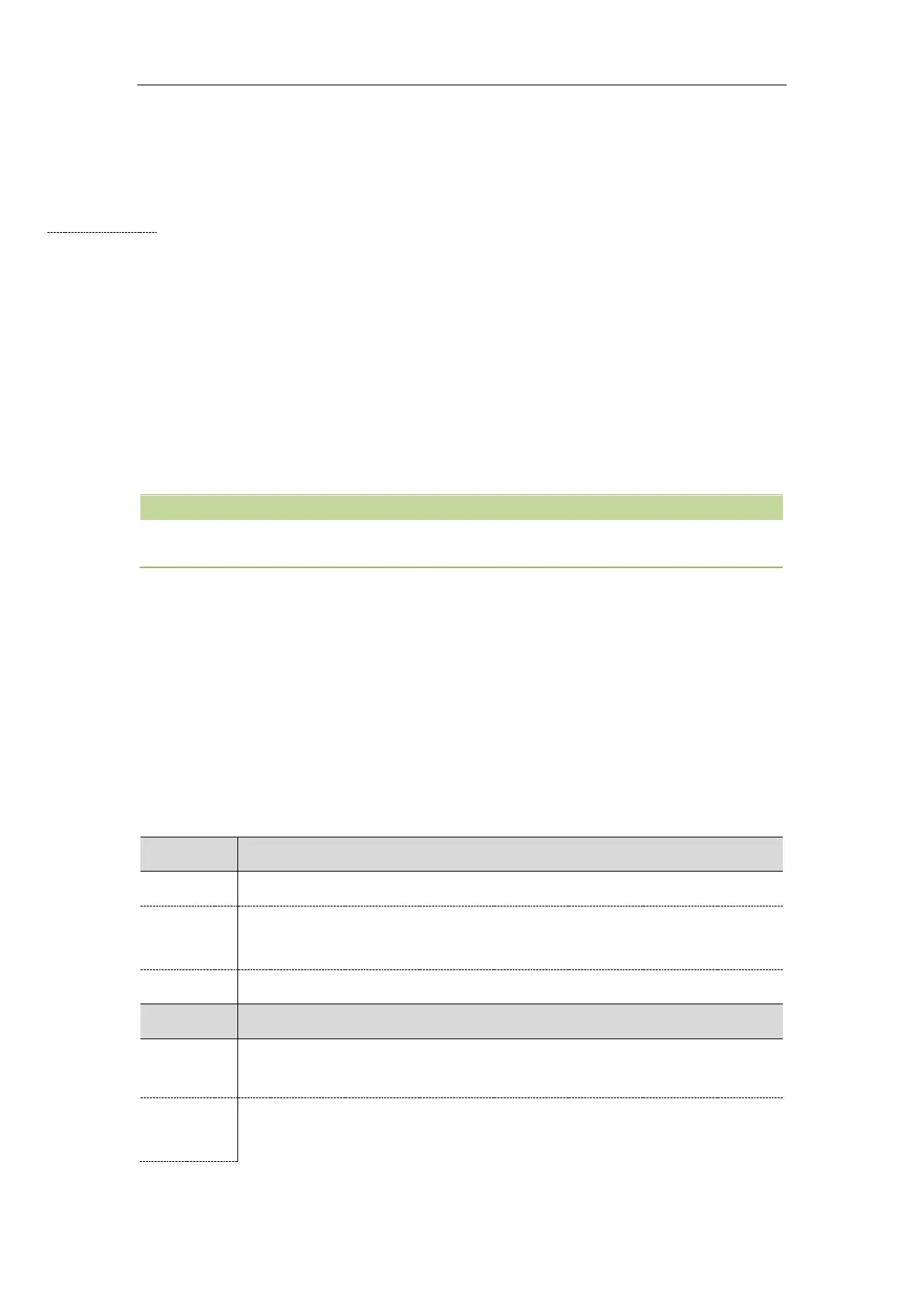Troubleshooting
567
reset. Changes associated with non-static settings made via web user interface and phone user
interface are saved in the <MAC>-local.cfg file.
Reset non-static settings: All non-static parameters will be reset. After resetting the non-static
settings, the IP phone will perform auto provisioning immediately.
Reset static settings: All static parameters will be reset.
Reset userdata & local config: All the local cache data (for example, user data, history or directory)
will be cleared. And all configurations saved in the <MAC>-local.cfg configuration file on the IP
phone will be reset.
Reset to Factory: All configurations on the phone will be reset.
You can reset the IP phone to default factory configurations. The default factory configurations are
the settings that reside on the IP phone after it has left the factory. You can also reset the IP phone
to custom factory configurations if required. The custom factory configurations are the settings that
defined by the user to keep some custom settings after resetting. You have to import the custom
factory configuration files in advance.
The Reset local settings/Reset non-static settings/Reset static settings/Reset userdata & local config
option on the web user interface appears only if “static.auto_provision.custom.protect” is set to 1.
Topics
Reset to Factory Configuration
Resetting the IP phone to Default Factory Settings
Resetting the IP phone to Custom Factory Settings
Deleting the Custom Factory Settings Files
Reset to Factory Configuration
The following table lists the parameters you can use to configure reset to factory.
features.reset_by_long_press_enable
It enables or disables the IP phone to reset to factory by long pressing OK/√ key.
features.factory_pwd_enable
It enables or disables the IP phone to prompt for the administrator password when
you long press the OK/√ key to perform factory reset on the idle screen.

